The Spaceship
March 10, 2014 Bulgaria Abandoned Communism Cyrillic
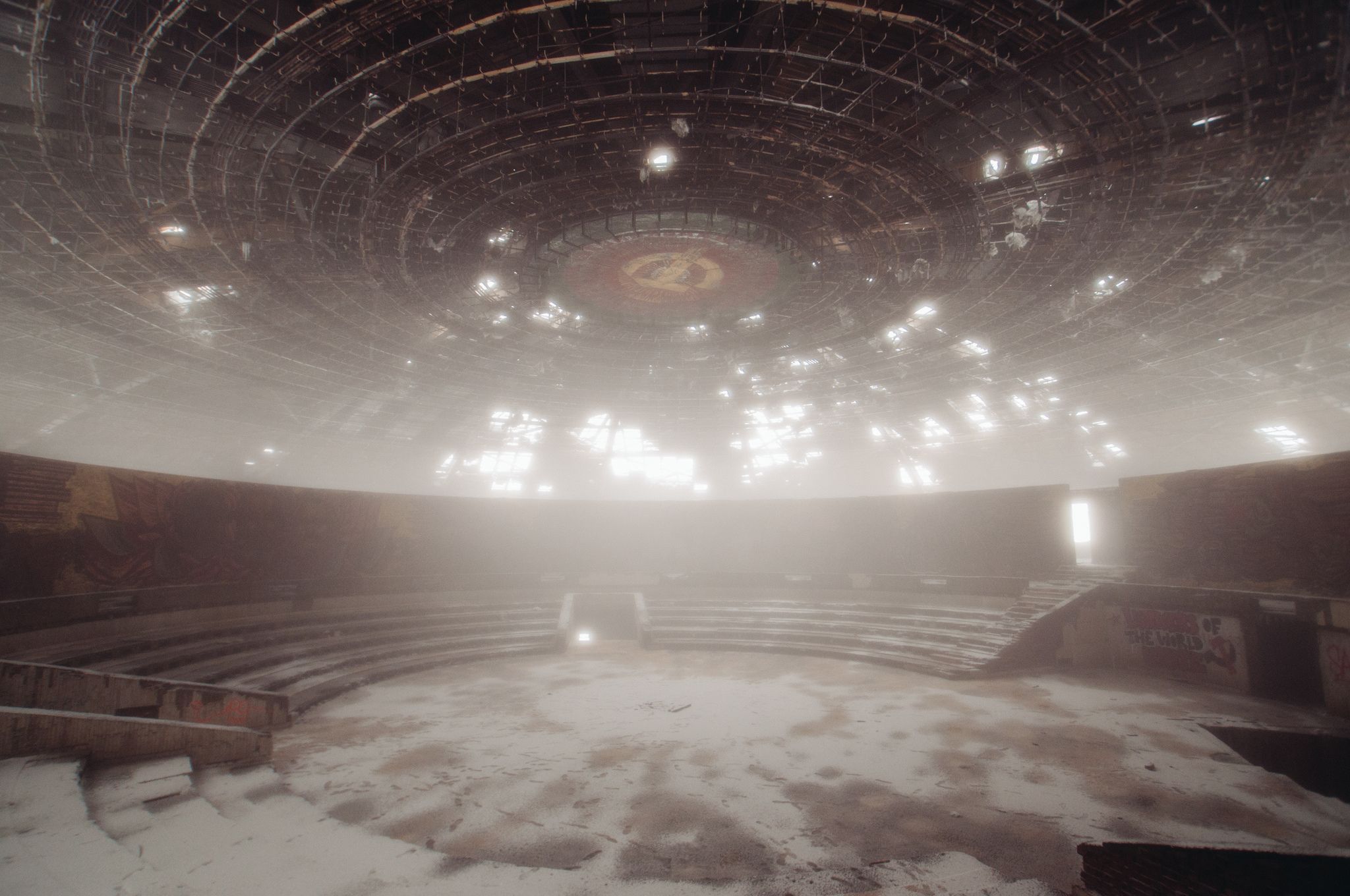
The statue at the bottom of the mountain had graffiti sprawled across it. “It says ‘Death to Communism’“, Lora helpfully translated, as we made our way past it and towards the summit.
We were in Bulgaria for the second time in less than a year, this time with a local by our side: Lora recently moved back to her home country after living in Berlin for a few years. When Tobi, Lena, Anika and I decided to visit her, she had drawn up an elaborate travel schedule for us, organized a car and pledged to fulfill a long-held dream: Go to the former Bulgarian Communist Party’s monument in the mountains.
Unprepared for what emerged
So here we were, driving up to a peak where Bulgarians once made a decisive victory against the Ottoman Empire. This historic place was later chosen as a meeting spot by the party; an absurd choice. Buzludzha, as it is called, is three hours from the capital Sofia, at the end of a long road. Today, it is hardly marked — save for a vandalized statue. Death to communism indeed.
We drove until we reached the low-hanging clouds, until the streets were suddenly covered in ever deeper snow. Since visibility inside of the mist was near zero, we had no idea where the street even continued. So we parked the car, put on our coats and followed the blinking GPS dot on the phone. After ten minutes of walking through the snow and ice, our faces were wet, condensation water was dripping from the camera. The dot indicated that we were standing right in front of the building. I was wholly unprepared for the sight that emerged once we walked up the broad steps leading up into the greyness: The round outline of a huge, smooth building, towering above us. It was absolutely massive: Like a spaceship had landed on this mountain and left abandoned.
I sprinted towards it in feverish excitement.
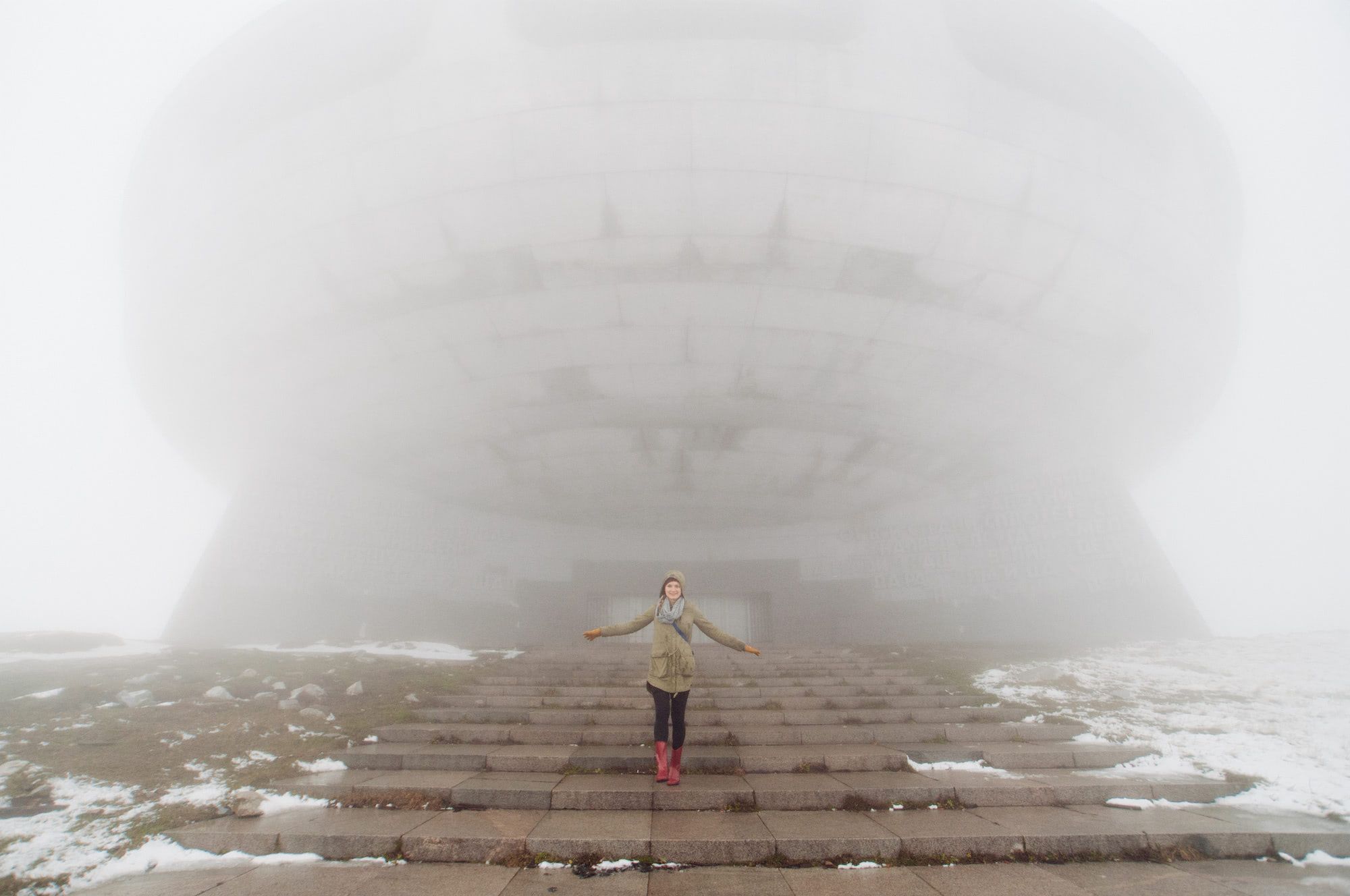 The spaceship
The spaceship
Lora had warned us that the former glory of Buzludzha was long gone: “I hear it is pretty much a dump now”, she had said. But from the outside it looked pretty much unscathed: The entrance was adjourned with concrete Cyrillic letters, skewed like crooked teeth, that praised the wonders of communism. Behind it, a skinny tower reached up even higher into the clouds.
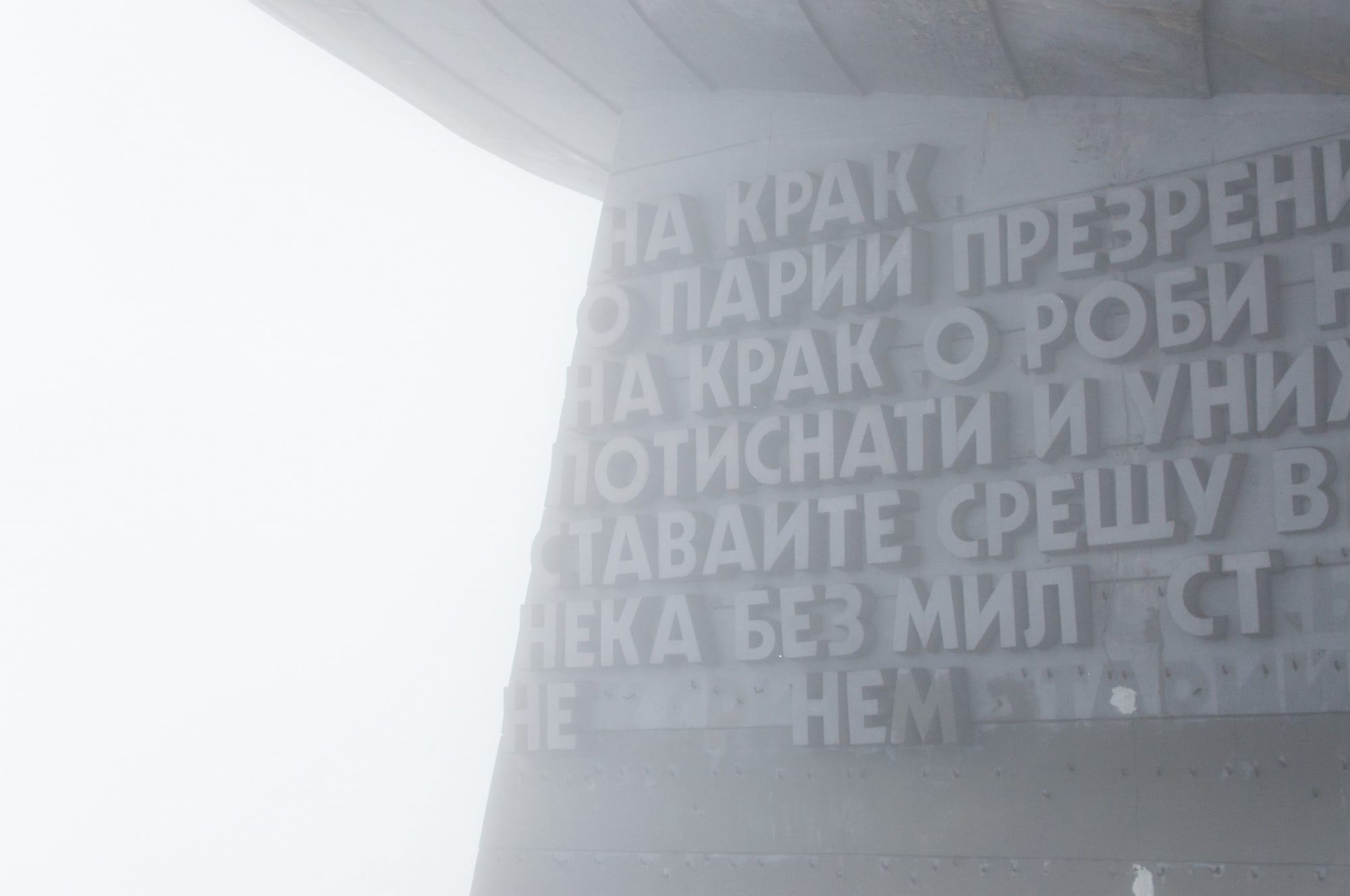 The greyness
The greyness
And yet the most stunning sight awaited indoors: After climbing through a tiny hole in the outside wall, we entered the grand hall: A small stadium over which spanned an enormous roof with a prominent red emblem featuring hammer and sickle. Even in its damaged stage, it was such a grandiose sight that we were mesmerized. Daylight leaked in through the many cracks in the ceiling, snow was falling onto the remnants of the marble floor and we stood, silently looking up.
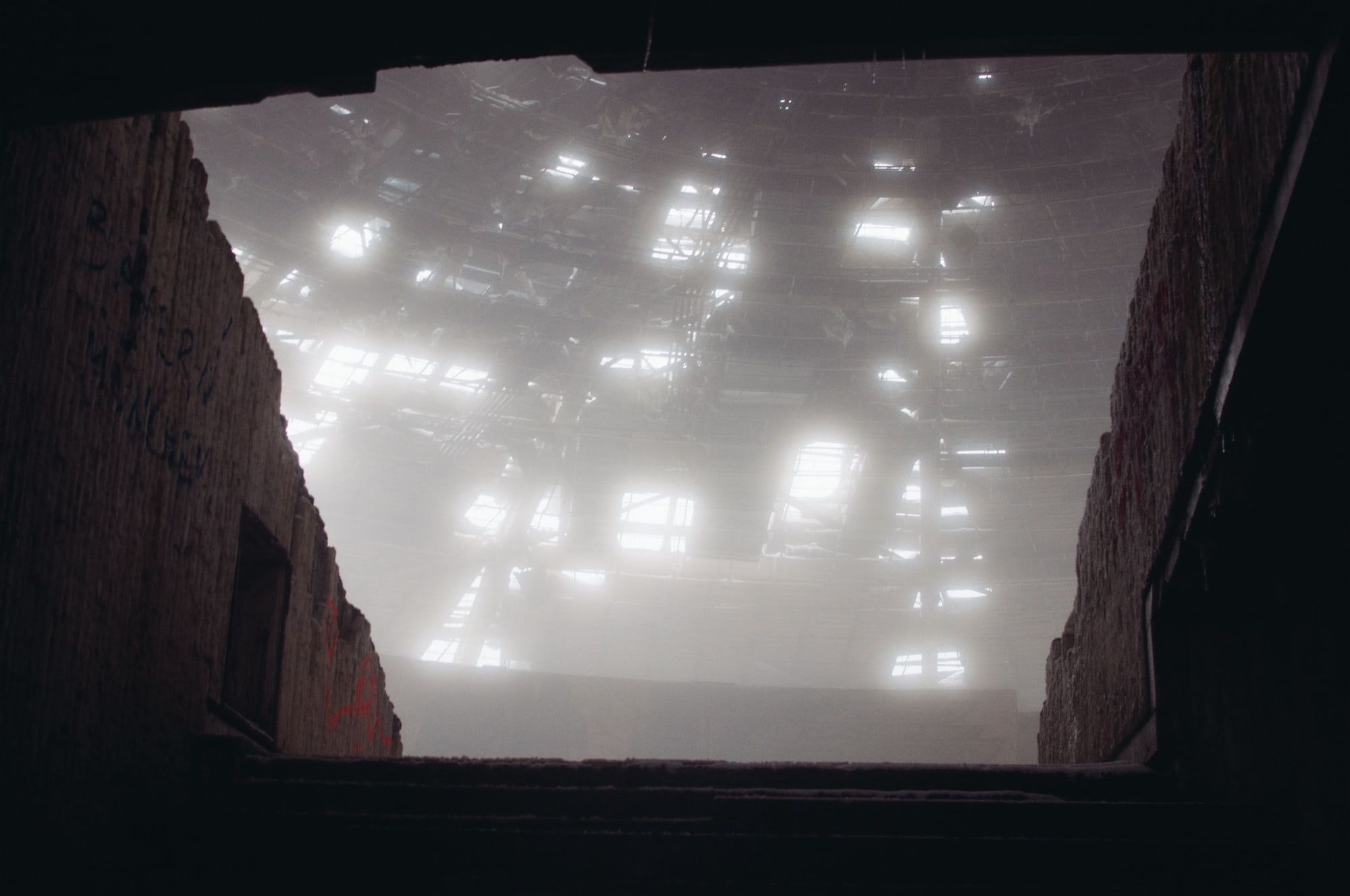 Promising sight from the stairs
Promising sight from the stairs
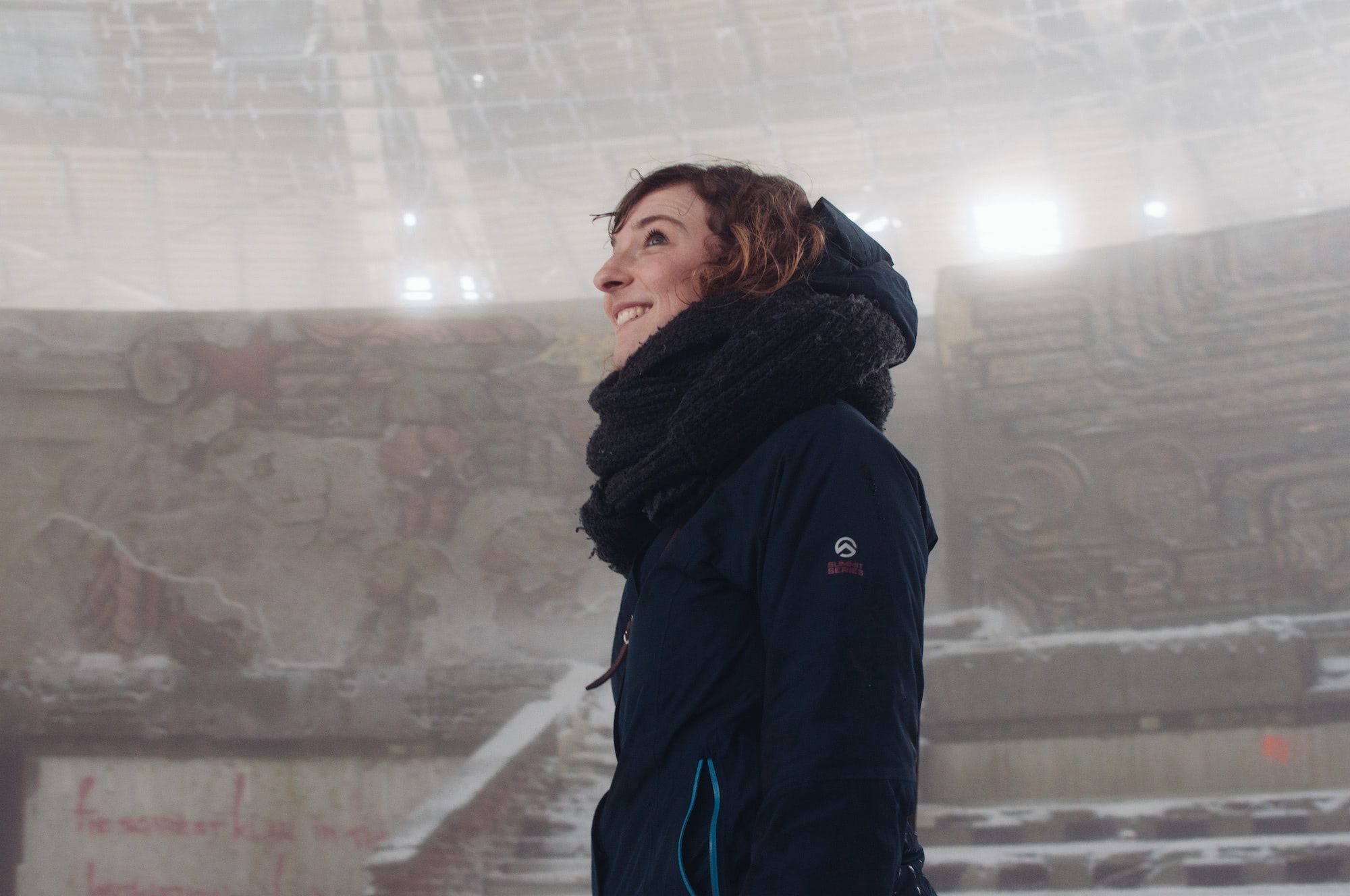 Lena
Lena
 Panorama
Panorama
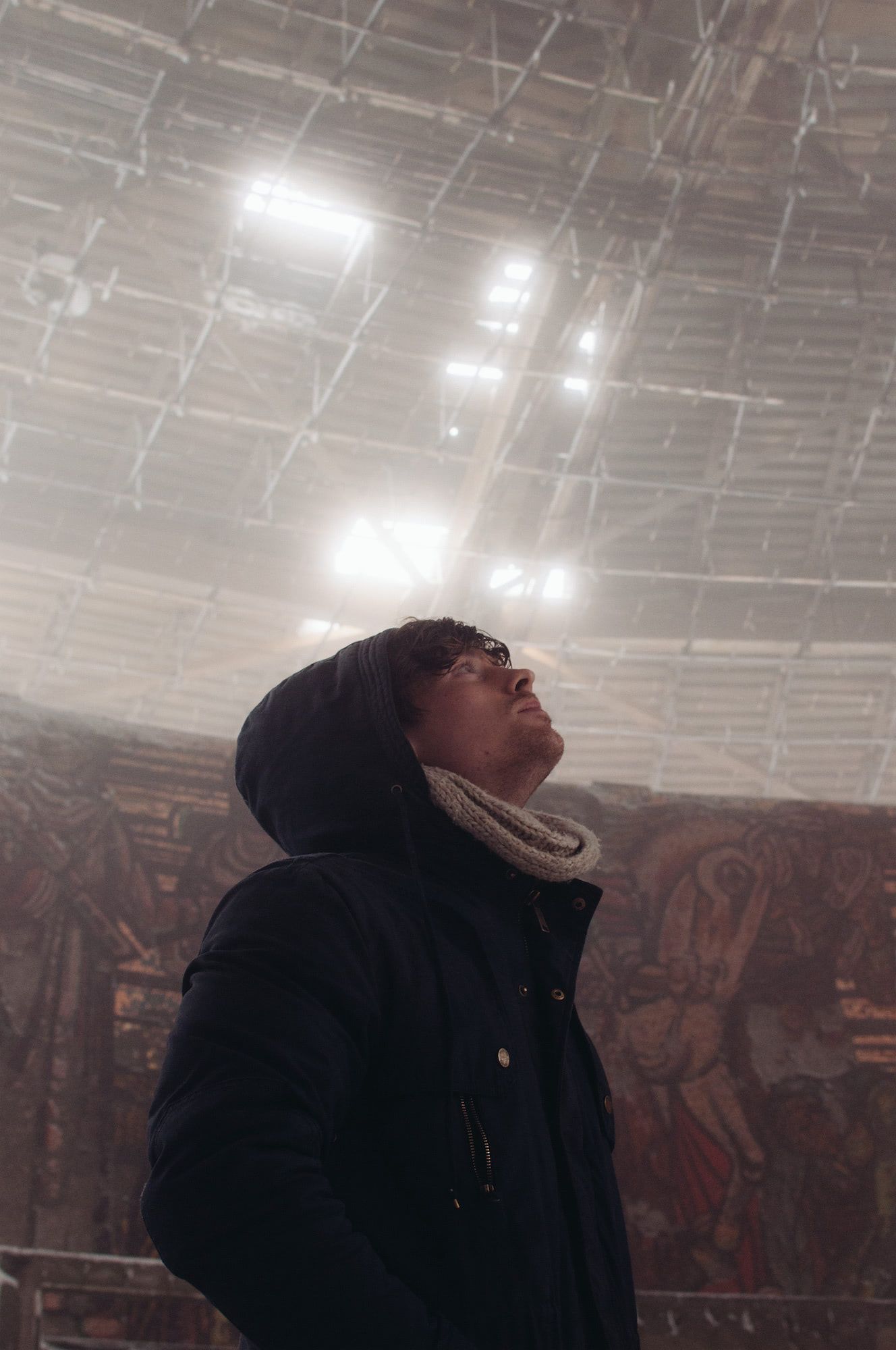 Tobi
Tobi
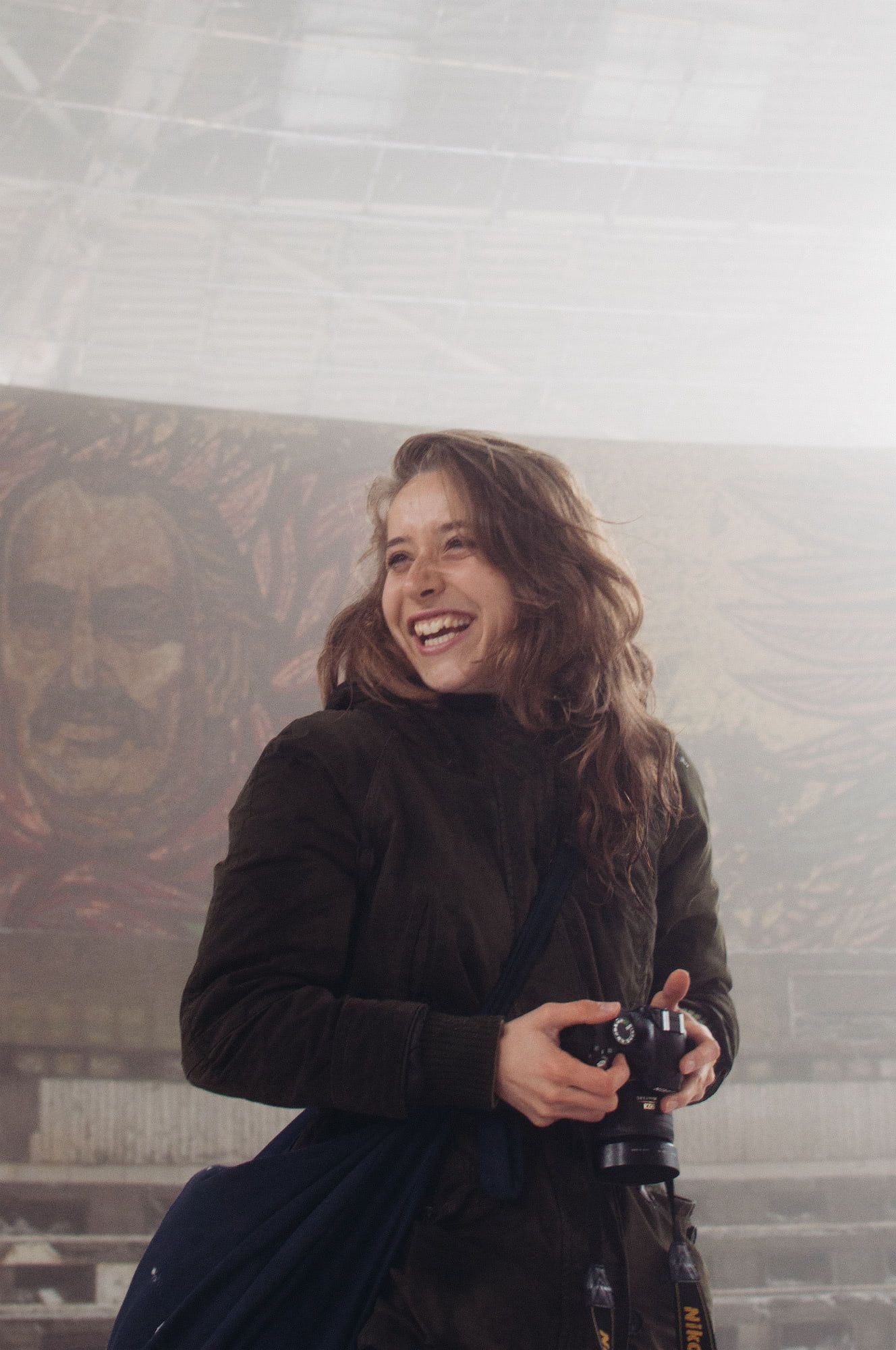 Lora
Lora
There are places in this world that are suspended in time: In Sofia’s city center, you can look at a church from the 11th century and try to conjure up an image of the world once surrounded it. But what I find even more interesting are the places that teeter on the brink of existence, that have been forgotten rather than preserved. Somehow, they seem more real, they spark my imagination.
The meltwater dropped from Buzludzha’s skeleton roof and we looked up to the giant emblem reading “Proletarians of all countries, unite!” At that moment, despite all the damage, you could image an intact ceiling spanning over a room full of party members. The party leader would emerge from one of the doorways, strolling down the marble steps and past the glorious mosaics on the walls. You could imagine his speech, the clapping audience. And you could imagine how powerful it must all have felt, being on top of the mountain in a spaceship, somewhere over communist Bulgaria.
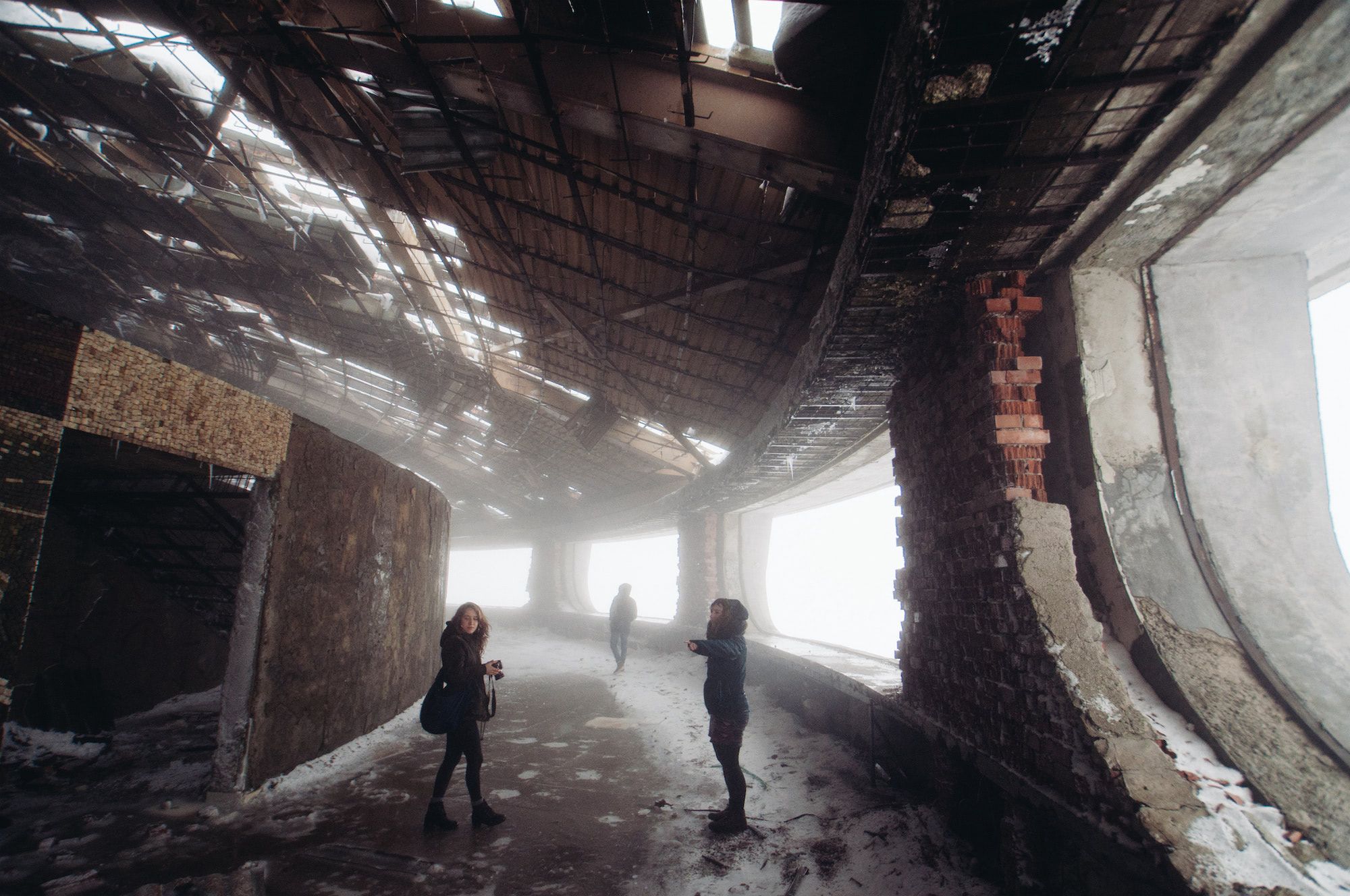 Walkabout
Walkabout
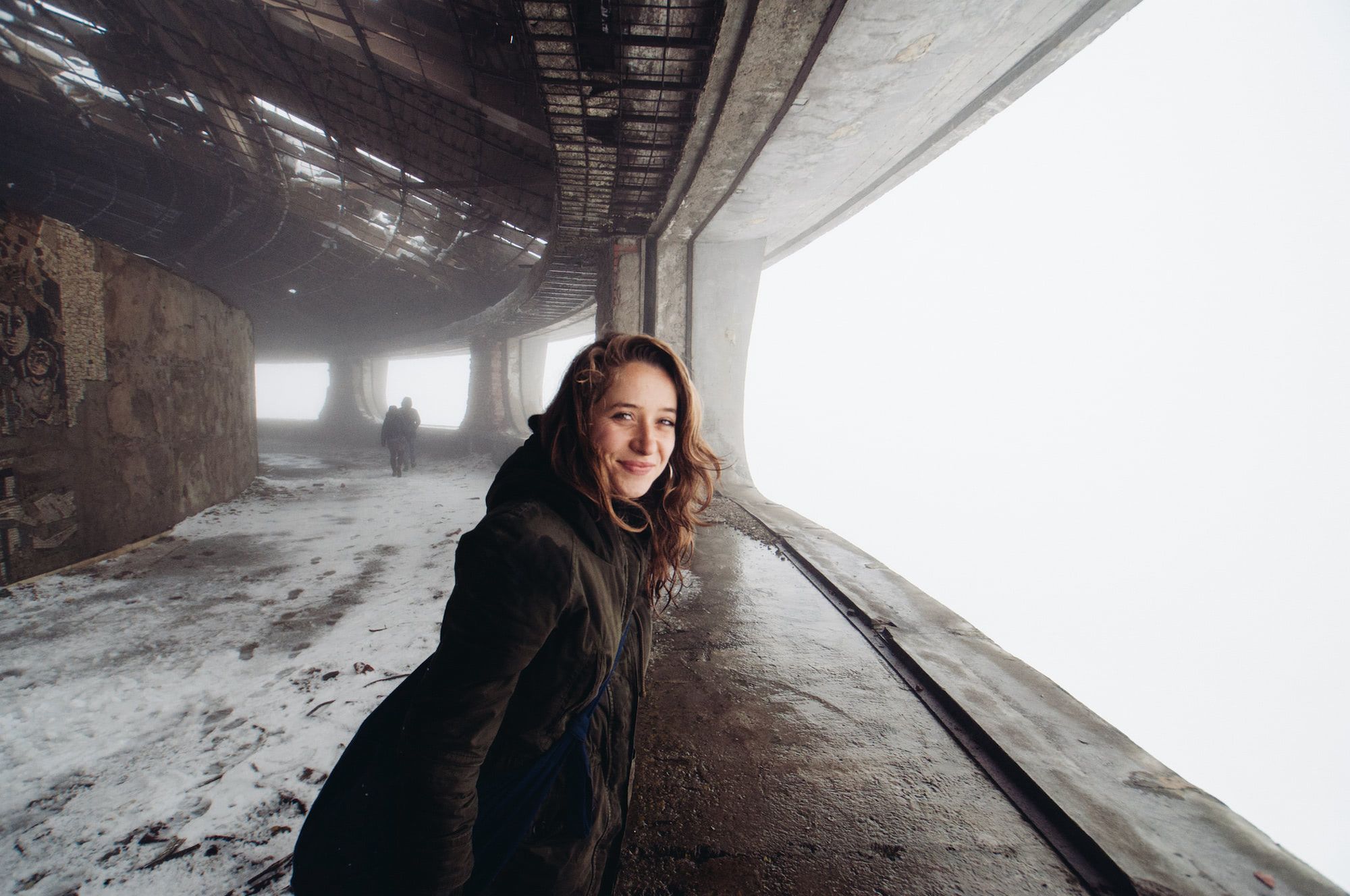 Lora
Lora
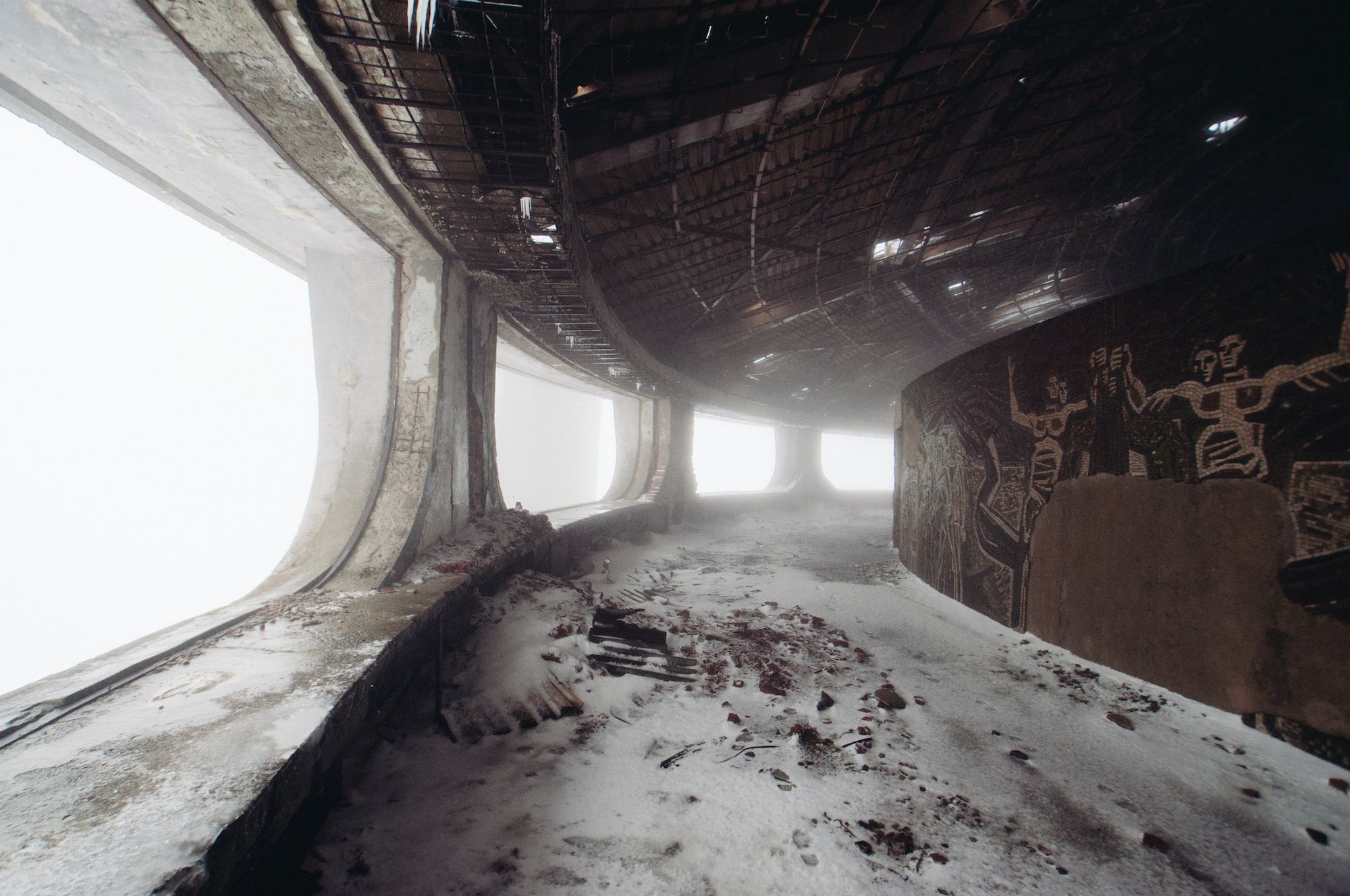 The gallery
The gallery
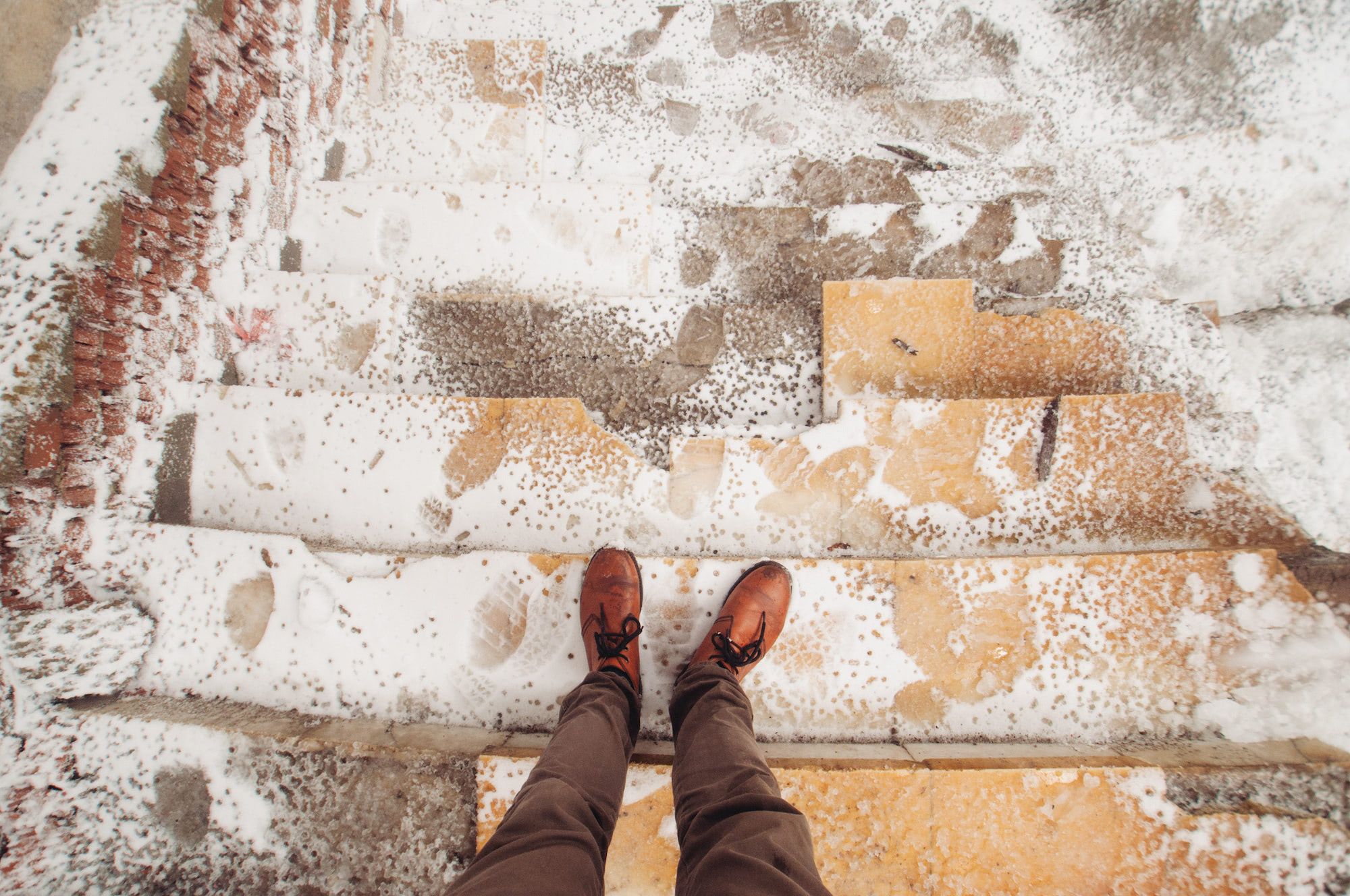 Marble, long gone
Marble, long gone
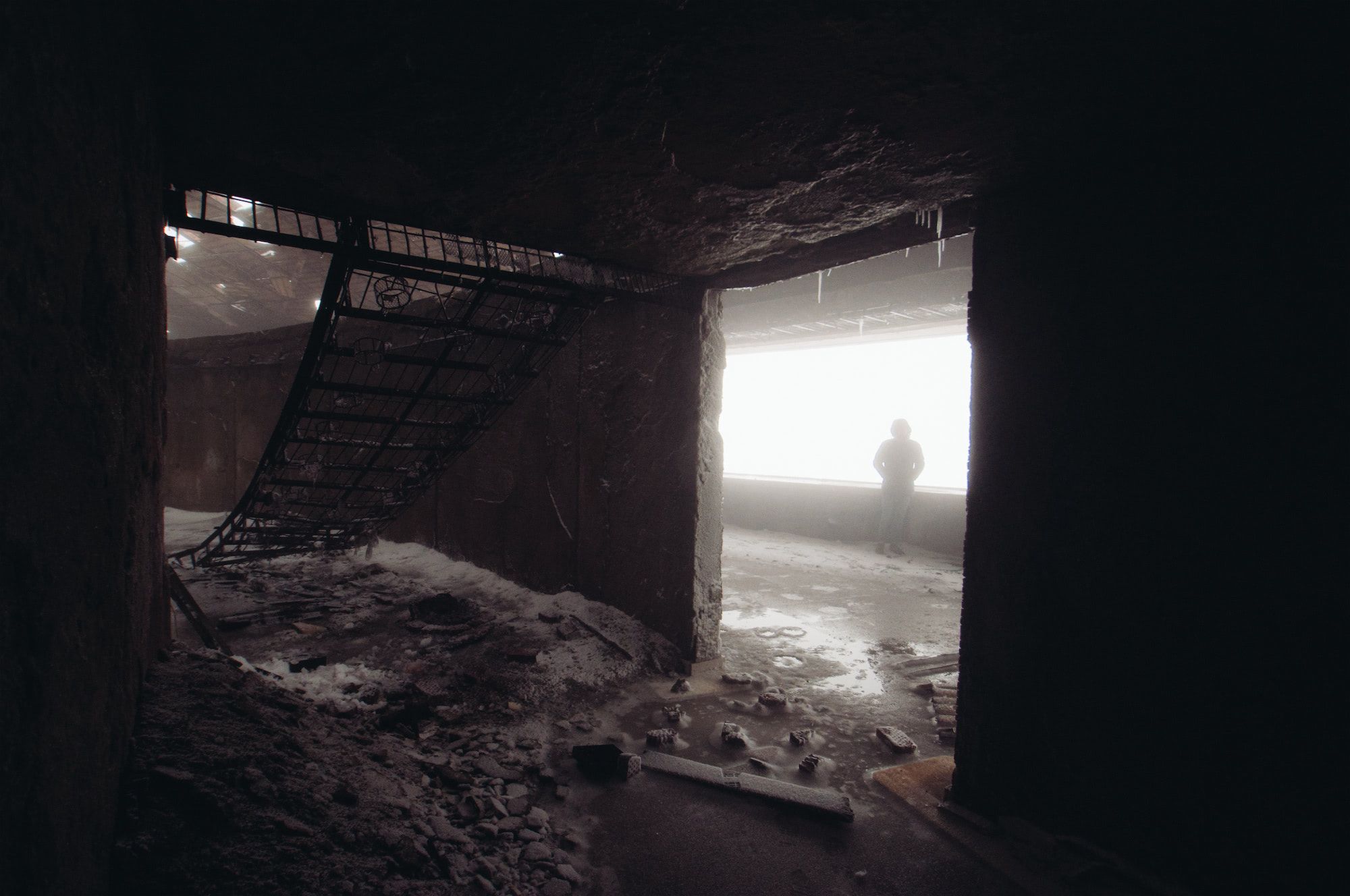 You could climb up the lamp
You could climb up the lamp
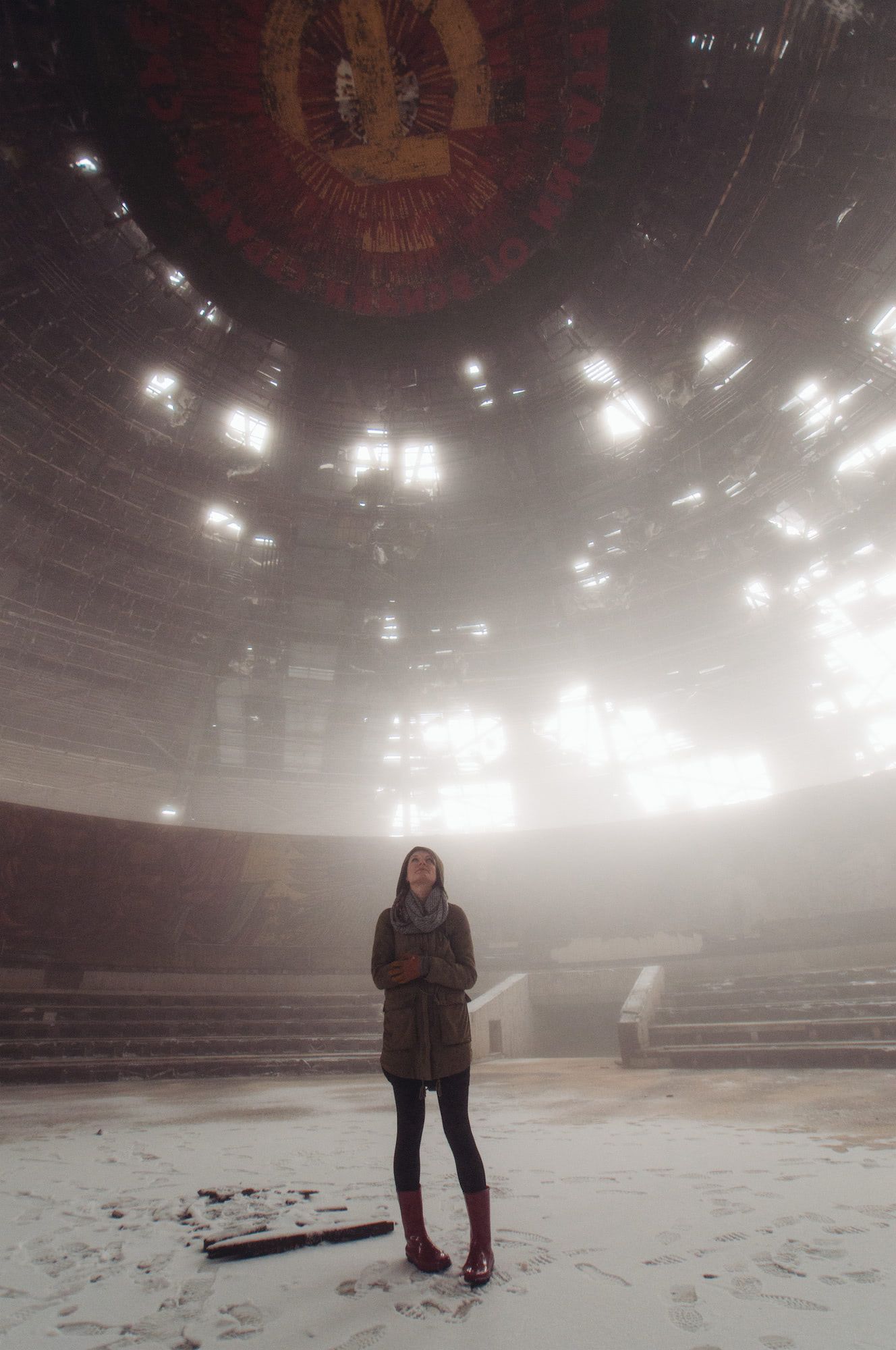 Anika
Anika
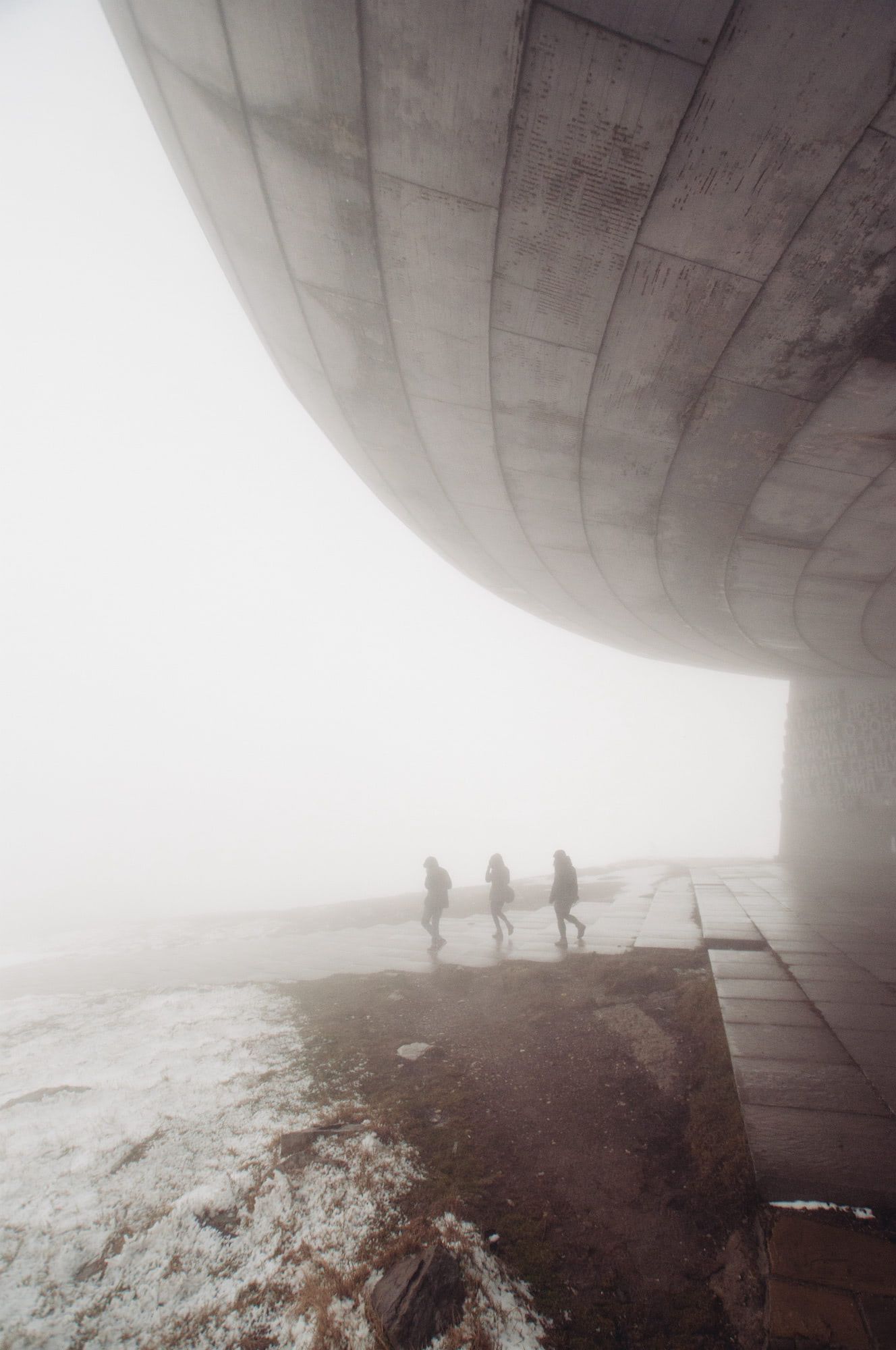 Tiny people
Tiny people